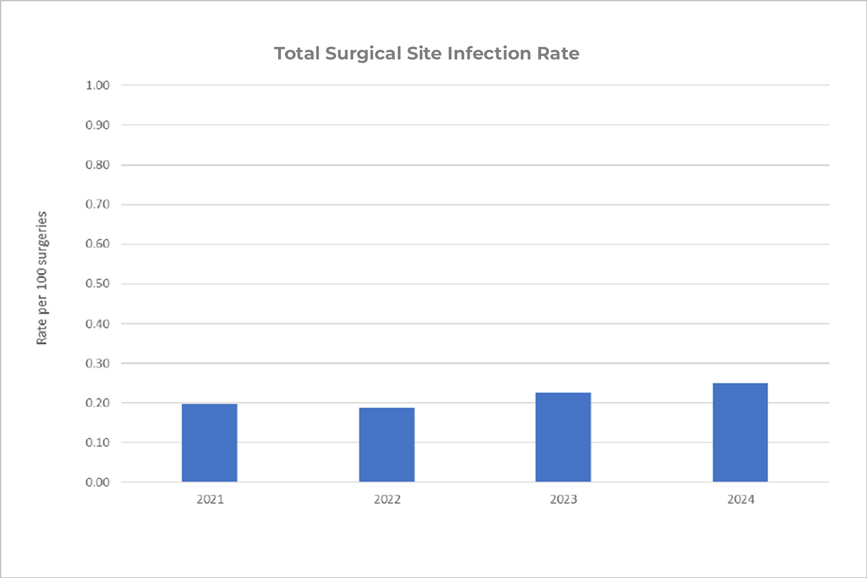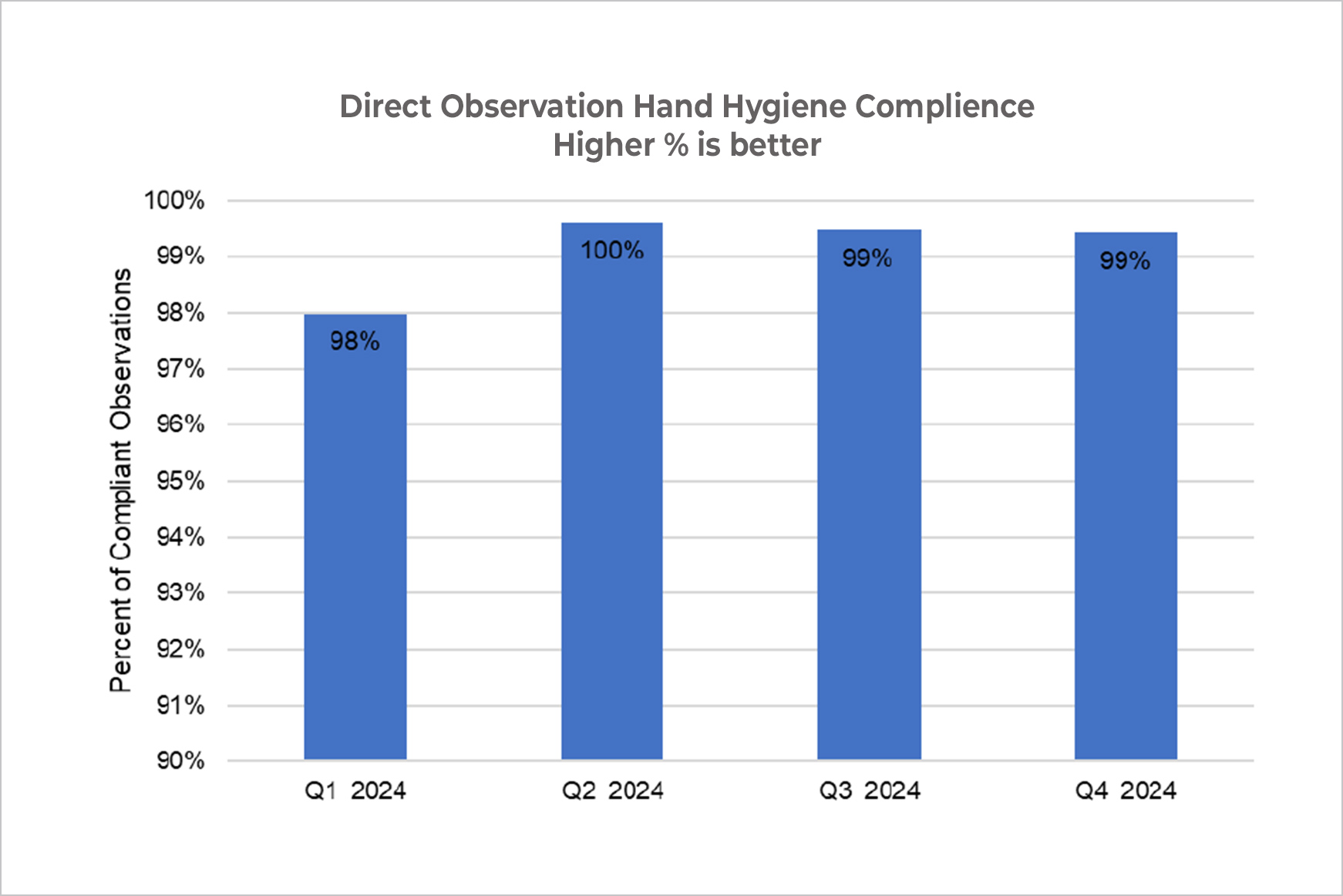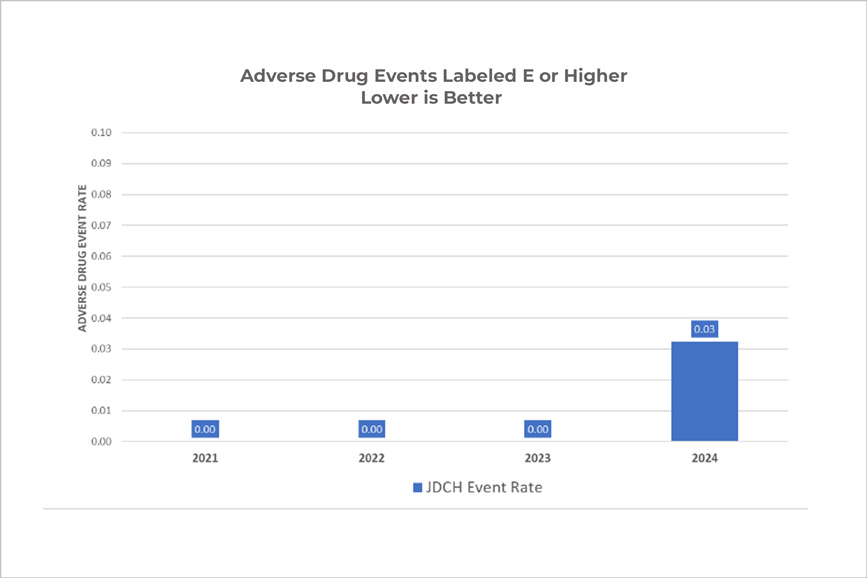Quality and Safety Data for Joe DiMaggio Children’s Hospital
Quality and Patient Safety: Our Focus
At Joe DiMaggio Children’s Hospital, high quality care and patient safety are the foundations of clinical excellence. We believe in making the patient and family experience the best it can be, because every child deserves not only exceptional medical care, but also a healing environment filled with love, hope, and compassion.
Joe DiMaggio Children’s Hospital is proud to be a part of a 140+ network of children’s hospitals - Solutions For Patient Safety (SPS)-working together to eliminate patient harm. Continuous quality improvement is our goal and our journey to zero harm has us regularly evaluating our quality and safety performance. Very importantly, we rely on our patients and their families to partner with us. Sharing feedback allows us to create a better experience to meet each child’s needs.
Our Quality Measures:
We track quality and safety indicators so that we can see where we are doing well, and identify areas for improvement. Although we look at many metrics, below is a small selection of data that we routinely measure. This section of our website is where we present how we are doing.
Central Line Associated Blood Stream Infection (CLABSI):
Measurement

Continuous Quality Improvement Practices
At JDCH, we follow evidence-based guidelines to minimize the chance of a central line becoming infected. While the line is in place, the team monitors the site daily. Collaboration between our infection prevention team, nurses, doctors, and leadership include regular discussions regarding necessity, dressing changes, and access and handling of the site.
Surgical Site Infection (SSI):
There are times when a child may need surgery. The surgical site may be at risk for infection. At JDCH, we follow evidence-based guidelines to minimize the chance of a surgical site becoming infected.
Measurement

Continuous Quality Improvement Practices
HAND HYGIENE:
Washing hands at key times with soap and water and the use of hand sanitizer are some of the most important steps that can be taken to get rid of germs and avoid spreading germs to those around you. Proper hand hygiene is one of the most important things we at Joe DiMaggio can do to prevent infections.
Measurement

Continuous Improvement Practices
Our teams are committed to preventing infections. Education to improve adherence to hand hygiene and education to staff on the importance of improving hand hygiene adherence is vital. We train all healthcare personnel to follow the 5 “moments” to hand washing as recommended by the World Health Organization
These 5 moments are:
- Before touching a patient
- Before clean/aseptic procedures
- After body fluid exposure/risk
- After touching a patient
- After touching patient surroundings
Serious Adverse Serious Drug Events (ADE’s)
We track and review all medication events, even if they do not cause harm. Tracking helps us improve patient safety. As you can see from the chart below, we are proud to report no adverse drug events resulting in serious patient harm.
Measurement

Continuous Improvement Practices
We continue to remain alert and proactive with our approach. We regularly adopt best practices that are shared by our peers through the Solutions for Patient Safety network. Our healthcare professionals follow strict medication safety protocols to prevent ADE’s.
Patient Experience:
At JDCH, we believe in making the patient and family experience the best it can be, because every child deserves not only exceptional medical care, but also a healing environment filled with love, hope, and compassion. We strive to create an environment that fosters trust, empathy, and respect. Feedback from our patients and family partners guides us toward providing better care and improved safety and quality results.
Measurement: (compared to similar children’s hospitals)
| Department | 2021 | 2022 | 2023 | 2024 |
|---|---|---|---|---|
| Emergency Department | 87 | 84 | 88 | 89 |
| Inpatient | 92 | 92 | 91 | 92 |
| Outpatient | 95 | 95 | 96 | 96 |
Comparison to Percentiles:
- Top Decile: 90%
- Top Quartile: 75%
- Above 50th Percentile: > 50%
- Below 50th Percentile: < 50%
All Scores Represents raw official scores only
Continuous Quality Improvement Practices
Patient and family centered care is at the heart of Joe DiMaggio Children’s Hospital. Our patient experience leaders round daily on our patients and families to better understand their experience. Daily patient and family centered rounds are conducted on all patients by our medical teams. We empower our patients and families to partner with us in all aspects of patient care, and we rely on their feedback to improve the patient experience.
Datasource: Pediatric Treated and Released ED Arrival Time to Departure Time

